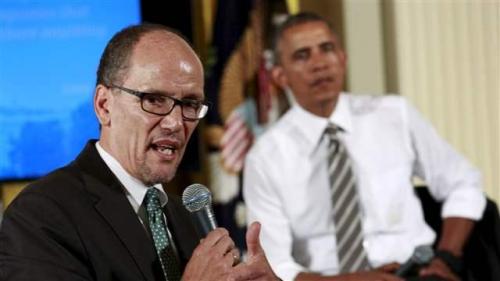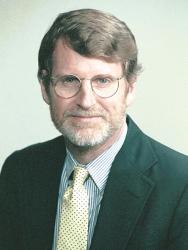This article originally appeared on Real Clear Markets on March 7, 2017.
Automatic payroll withholding to help workers save for retirement should be a no-brainer. Both conservatives and liberals worry that Social Security will lack funds to pay for promised benefits after 2030. At the same time, about one-third of workers are “not too confident” or “not at all confident” they will have enough money to live comfortably when they retire. Under these circumstances it seems sensible to make it as easy as possible for workers to save for retirement in the workplace. Twelve years ago George W. Bush proposed giving workers the option of placing up to 4% of their wages or $1,000 in private retirement accounts. (The funds would have come from workers’ Social Security contributions.) Oddly, however, most conservative lawmakers are opposed to practical steps to put retirement savings plans in every workplace. This position seems puzzling in view of conservatives’ opposition to raising taxes to pay for future Social Security pensions. If Social Security benefits must be trimmed to keep the system solvent, it makes sense to offer all workers, including those without a company pension plan, a simple way to accumulate private retirement savings.
At the moment a sizeable fraction of employees works for companies that do not offer a 401(k) or any other kind of retirement plan. The exact percentage of workers who lack access to a plan depends on the category of employee and the source of statistics. Full-time workers between ages 21 and 64 are more likely to be offered a retirement plan compared with part-time employees, teens, and older workers. Even in the favored group of full-time, prime-age workers, about one-quarter are not offered a savings plan at their place of work. The statistics for workers in small firms are much worse. Only about half of workers in companies with fewer than 100 employees is offered a retirement savings plan.
Among employees who are offered a retirement plan, the take-up rate is very high for workers employed in both large and small companies. In many private retirement plans, of course, workers are enrolled in the plan whether or not they choose to participate. Employers make contributions into the plan for all the workers they hire, perhaps after a brief waiting period. Even in plans where workers must elect to participate by making voluntary contributions, however, enrollment rates tend to be very high. Participation rates in voluntary savings plans can be boosted still further if workers are automatically enrolled as soon as they’re put on a company’s payroll. Employees in these “opt-out” plans can affirmatively elect to drop out of the savings plan, but experience shows that relatively few make this choice.
Plainly, most workers recognize the need to set aside part of their pay for retirement, especially when their employer fails to offer a traditional pension. When enrollment in a retirement plan is simple and when savings are automatically subtracted from wages in each pay period, the great majority of prime-age workers will accumulate retirement savings. Even if many end up saving too little, all will have the opportunity of saving something. Most will accumulate more than would be the case if they were forced to save outside of a workplace plan.
If Social Security benefits must be trimmed to keep the system solvent, it makes sense to offer all workers, including those without a company pension plan, a simple way to accumulate private retirement savings.
Legislators in five states, including California, Illinois, and Maryland, have passed laws mandating that most private employers offer their workers automatic enrollment in a retirement savings plan. Employers that already provide a retirement plan or that choose to establish a new retirement plan of their own are exempt from participating in the state plan, but the aim of the new laws is to offer all private employees the opportunity to have part of their wages deposited in so-called “auto-IRAs.” Workers’ participation in the plans is voluntary. Employees who don’t want to contribute are allowed to opt out. Payroll withholdings deposited in worker IRAs would be invested in one or more investment options. States are still deciding on the investment options to be offered, but it is likely these will be similar to the choices available in many existing 401(k) plans.
A better and simpler alternative to state auto-IRA plans would be a single federal plan, a position endorsed by GOP presidential candidate John McCain in his 2008 campaign. Congress has shown little interest in establishing such a plan or mandating employer participation in one, however. Astonishingly, conservative federal lawmakers now seem intent on disrupting state plans to establish their own auto-IRAs. They are trying to accomplish this by invalidating a regulatory ruling made by the U.S. Department of Labor last August. That ruling permitted state auto-IRAs to move forward with the assurance that they would not be covered under federal ERISA rules. Without this assurance from DOL several states may postpone their plans for auto-IRAs or turn to the courts.
Some small businesses and other employers that have not established workplace retirement plans oppose state-mandated auto-IRA plans. One explanation is that, even though no employer contribution is required, the plans will impose some administrative burden on employers, who must collect and forward workers’ contributions to investment managers. While this burden is real, it is hard to believe the administrative cost is large. All employers, big and small, must already calculate, withhold, and transmit payroll and income tax payments to federal and state tax authorities. Calculating auto-IRA deposits is less difficult than computing income tax withholdings.
The striking aspect of this debate is the opposition of conservative lawmakers to practical measures to boost voluntary private savings – savings that will placed primarily in private investment options of the kind found in thousands of 401(k) plans. Some conservatives may be uncomfortable forcing private employers to participate in a government-run scheme. However, employers are already obliged to participate in and contribute to Social Security, unemployment insurance, and Medicare, each of which is government run and holds its reserves solely in government securities. Nearly all informed observers believe that future retirement incomes will shrink unless contributions to the retirement system rise. Several states have taken steps to encourage increases in private, voluntary retirement savings. It seems astonishing that conservatives want to block the way and yell “Halt!”
The Brookings Institution is committed to quality, independence, and impact.
We are supported by a diverse array of funders. In line with our values and policies, each Brookings publication represents the sole views of its author(s).










Commentary
Op-edLet’s give workers a retirement savings plan at work
March 7, 2017